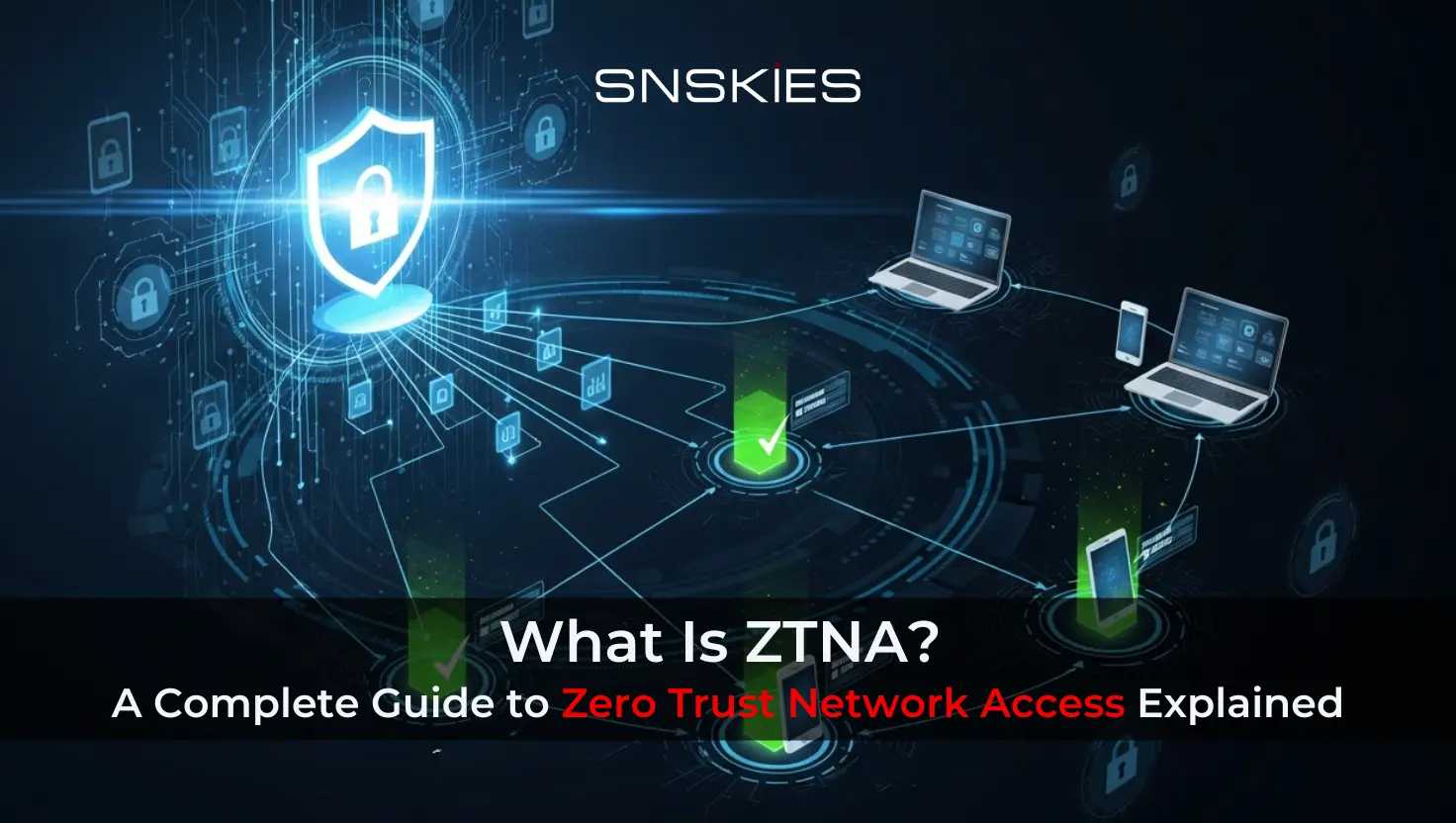- Articles
How to Stop a DDoS Attack: Comprehensive Guide to Protection and Mitigation
- Articles
How to Stop a DDoS Attack: Comprehensive Guide to Protection and Mitigation
- Articles
- August 15, 2025
In today’s interconnected digital landscape, understanding how to stop a DDoS attack is crucial for maintaining online availability and security. A DDoS attack, or distributed denial of service attack, can cripple websites, applications, and networks by flooding them with malicious traffic. As cyber threats evolve, businesses worldwide must prioritize robust defenses to safeguard their operations. SNSKIES, a leading provider of advanced cybersecurity solutions, specializes in managed DDoS protection services, Web Application Firewall (WAF), and Content Delivery Network (CDN) integrations designed to mitigate these risks effectively. This guide explores the mechanics of DDoS attacks, their types, impacts across various business sectors, and proven strategies to stop them, ensuring semantic relevance for modern search algorithms focused on user intent, expertise, and global accessibility.
What is a DDoS Attack?
A DDoS attack is a sophisticated form of cyber assault where multiple compromised systems—often part of a botnet—are used to target a single victim, overwhelming it with excessive traffic or requests. Unlike a traditional Denial of Service (DoS) attack from a single source, a DDoS attack leverages distributed sources, making it harder to trace and block. This results in disrupted services, slowed performance, or complete unavailability for legitimate users.
The rise of DDoS-for-hire services has democratized these attacks, allowing even non-technical actors to launch them for as little as a few dollars. Globally, organizations face increasing threats, with attacks targeting everything from small e-commerce sites to large enterprises. Learning how to stop a DDoS attack involves proactive measures, real-time detection, and rapid response to minimize downtime and financial losses.
How Does a DDoS Attack Work?
At its core, a DDoS attack exploits vulnerabilities in network protocols and infrastructure to exhaust resources. Attackers generate massive volumes of data packets or requests, flooding the target’s bandwidth, processing power, or memory. These attacks align with the Open Systems Interconnection (OSI) model layers:
- Network Layer (Layer 3): Involves IP spoofing and ICMP floods to saturate bandwidth.
- Transport Layer (Layer 4): Targets TCP/UDP protocols, such as SYN floods that exploit handshake processes.
- Presentation Layer (Layer 6): Manipulates data formats to cause crashes.
- Application Layer (Layer 7): Mimics legitimate user behavior with HTTP floods, overwhelming web servers.
The attack begins with reconnaissance, followed by botnet recruitment via malware. Once activated, the botnet directs traffic toward the victim, amplifying the assault through reflection techniques like DNS amplification. Without proper defenses, recovery can take hours or days, emphasizing the need for strategies on how to stop a DDoS attack swiftly.
Common Types of DDoS Attacks
DDoS attacks vary in complexity and focus, but they generally fall into three primary categories:
Volumetric DDoS Attacks
These are the most straightforward, aiming to consume all available bandwidth with junk data. Examples include UDP floods and ICMP (ping) floods, where amplified traffic can reach terabits per second, making the target inaccessible.
Protocol DDoS Attacks
Focused on exploiting protocol weaknesses, these attacks target stateful mechanisms like TCP connections. SYN floods, for instance, send incomplete connection requests, exhausting server resources without ever completing the handshake.
Application DDoS Attacks
The most insidious type, these mimic normal user traffic at Layer 7. HTTP GET/POST floods overwhelm web applications by requesting resource-intensive pages repeatedly, often evading basic filters.
Additionally, attacks can be classified as:
- Application Layer Attacks: Directly target software vulnerabilities, such as slowloris attacks that hold connections open indefinitely.
- Infrastructure Layer Attacks: Hit underlying hardware and networks, including amplification attacks using public servers like NTP or DNS.
Emerging variants, such as ReDoS (Regex Denial of Service) and hybrid attacks combining multiple types, highlight the need for adaptive defenses.
Impacts of DDoS Attacks on Business Sectors
DDoS attacks pose significant risks across diverse business sectors, disrupting operations and eroding trust. In the e-commerce sector, attacks during peak seasons like Black Friday can lead to lost sales and cart abandonments, costing millions in revenue. Financial institutions face regulatory penalties and customer churn from downtime in online banking services.
The gaming industry suffers from lag and server crashes, alienating players and damaging esports reputations. Healthcare providers risk patient safety if telemedicine or electronic records become unavailable. Government and public services experience eroded public confidence during attacks on critical infrastructure.
In manufacturing and supply chain sectors, IoT-connected devices become entry points, halting production lines. Media and entertainment platforms lose ad revenue from streaming interruptions. SNSKIES tailors its DDoS mitigation solutions to these sectors, offering global coverage to protect against region-specific threats, such as those amplified in high-traffic areas like North America, Europe, Asia-Pacific, and emerging markets in Africa and Latin America. By focusing on semantic signals like threat intelligence and real-time analytics, SNSKIES ensures worldwide businesses maintain resilience against these pervasive cyber risks.
Protection and Mitigation Techniques Using Managed DDoS Protection Service, WAF, and CDN
Effective protection against DDoS attacks requires layered defenses. SNSKIES provides integrated managed Distributed Denial of Service (DDoS) protection services that automatically detect and scrub malicious traffic at the edge. This includes always-on monitoring and AI-driven anomaly detection to identify attacks in seconds.
A Web Application Firewall (WAF) from SNSKIES acts as a reverse proxy, inspecting HTTP traffic for Layer 7 threats and blocking exploits like SQL injection or XSS while allowing legitimate requests. Custom rules and rate limiting further enhance protection.
Complementing this, SNSKIES’s Content Delivery Network (CDN) distributes content across global nodes, absorbing volumetric attacks by dispersing traffic and caching static assets to reduce origin server load. This trio—managed DDoS service, WAF, and CDN—forms a comprehensive shield, ensuring low-latency performance and high availability for users worldwide.
10 Best Practices to Prevent DDoS Attacks
Preventing DDoS attacks demands a proactive approach. Here are 10 expert-recommended best practices:
- Monitor Network Traffic: Baseline normal patterns to detect anomalies early.
- Develop a Response Plan: Outline roles, communication, and escalation procedures.
- Reduce Attack Surface: Minimize exposed ports and use geo-blocking where appropriate.
- Implement Rate Limiting: Cap requests per IP to thwart floods.
- Deploy a WAF: Filter malicious web traffic with signature-based and behavioral rules.
- Leverage CDN Services: Distribute load and cache content globally.
- Use Managed DDoS Protection: Partner with SNSKIES for automated scrubbing and mitigation.
- Enable Blackhole Routing: Divert attack traffic to null routes during incidents.
- Conduct Regular Drills: Simulate attacks to test defenses.
- Stay Updated on Threats: Integrate threat intelligence for emerging patterns.
These practices, when combined with SNSKIES’s solutions, provide semantically robust protection aligned with evolving search algorithms emphasizing comprehensive cybersecurity education.
How to Stop DDoS Attacks in Three Stages
Stopping a DDoS attack involves a structured process divided into three key stages:
- Detection: Use monitoring tools to identify unusual traffic spikes. SNSKIES’s AI-powered dashboards alert in real-time, analyzing patterns against known attack signatures.
- Response and Mitigation: Activate defenses like traffic scrubbing, where malicious packets are filtered at edge locations. Integrate WAF and CDN to reroute and absorb attacks without impacting users.
- Recovery and Analysis: Restore services post-attack, analyze logs for improvements, and update policies. SNSKIES offers post-incident reports to strengthen future resilience.
This phased approach ensures minimal disruption, with SNSKIES providing end-to-end support for global enterprises.
Conclusion: Secure Your Future with SNSKIES
Mastering how to stop a DDoS attack is essential in an era of escalating cyber threats. By understanding attack mechanics, types, and sector-specific impacts, businesses can implement effective mitigation strategies. SNSKIES stands out with its managed DDoS protection, WAF, and CDN services, delivering worldwide, GEO-optimized security that aligns with the latest search algorithm priorities for expertise and user value. Protect your online presence today—contact SNSKIES for tailored solutions that keep your operations unbreakable.
- Articles
- August 15, 2025
In today’s interconnected digital landscape, understanding how to stop a DDoS attack is crucial for maintaining online availability and security. A DDoS attack, or distributed denial of service attack, can cripple websites, applications, and networks by flooding them with malicious traffic. As cyber threats evolve, businesses worldwide must prioritize robust defenses to safeguard their operations. SNSKIES, a leading provider of advanced cybersecurity solutions, specializes in managed DDoS protection services, Web Application Firewall (WAF), and Content Delivery Network (CDN) integrations designed to mitigate these risks effectively. This guide explores the mechanics of DDoS attacks, their types, impacts across various business sectors, and proven strategies to stop them, ensuring semantic relevance for modern search algorithms focused on user intent, expertise, and global accessibility.
What is a DDoS Attack?
A DDoS attack is a sophisticated form of cyber assault where multiple compromised systems—often part of a botnet—are used to target a single victim, overwhelming it with excessive traffic or requests. Unlike a traditional Denial of Service (DoS) attack from a single source, a DDoS attack leverages distributed sources, making it harder to trace and block. This results in disrupted services, slowed performance, or complete unavailability for legitimate users.
The rise of DDoS-for-hire services has democratized these attacks, allowing even non-technical actors to launch them for as little as a few dollars. Globally, organizations face increasing threats, with attacks targeting everything from small e-commerce sites to large enterprises. Learning how to stop a DDoS attack involves proactive measures, real-time detection, and rapid response to minimize downtime and financial losses.
How Does a DDoS Attack Work?
At its core, a DDoS attack exploits vulnerabilities in network protocols and infrastructure to exhaust resources. Attackers generate massive volumes of data packets or requests, flooding the target’s bandwidth, processing power, or memory. These attacks align with the Open Systems Interconnection (OSI) model layers:
- Network Layer (Layer 3): Involves IP spoofing and ICMP floods to saturate bandwidth.
- Transport Layer (Layer 4): Targets TCP/UDP protocols, such as SYN floods that exploit handshake processes.
- Presentation Layer (Layer 6): Manipulates data formats to cause crashes.
- Application Layer (Layer 7): Mimics legitimate user behavior with HTTP floods, overwhelming web servers.
The attack begins with reconnaissance, followed by botnet recruitment via malware. Once activated, the botnet directs traffic toward the victim, amplifying the assault through reflection techniques like DNS amplification. Without proper defenses, recovery can take hours or days, emphasizing the need for strategies on how to stop a DDoS attack swiftly.
Common Types of DDoS Attacks
DDoS attacks vary in complexity and focus, but they generally fall into three primary categories:
Volumetric DDoS Attacks
These are the most straightforward, aiming to consume all available bandwidth with junk data. Examples include UDP floods and ICMP (ping) floods, where amplified traffic can reach terabits per second, making the target inaccessible.
Protocol DDoS Attacks
Focused on exploiting protocol weaknesses, these attacks target stateful mechanisms like TCP connections. SYN floods, for instance, send incomplete connection requests, exhausting server resources without ever completing the handshake.
Application DDoS Attacks
The most insidious type, these mimic normal user traffic at Layer 7. HTTP GET/POST floods overwhelm web applications by requesting resource-intensive pages repeatedly, often evading basic filters.
Additionally, attacks can be classified as:
- Application Layer Attacks: Directly target software vulnerabilities, such as slowloris attacks that hold connections open indefinitely.
- Infrastructure Layer Attacks: Hit underlying hardware and networks, including amplification attacks using public servers like NTP or DNS.
Emerging variants, such as ReDoS (Regex Denial of Service) and hybrid attacks combining multiple types, highlight the need for adaptive defenses.
Impacts of DDoS Attacks on Business Sectors
DDoS attacks pose significant risks across diverse business sectors, disrupting operations and eroding trust. In the e-commerce sector, attacks during peak seasons like Black Friday can lead to lost sales and cart abandonments, costing millions in revenue. Financial institutions face regulatory penalties and customer churn from downtime in online banking services.
The gaming industry suffers from lag and server crashes, alienating players and damaging esports reputations. Healthcare providers risk patient safety if telemedicine or electronic records become unavailable. Government and public services experience eroded public confidence during attacks on critical infrastructure.
In manufacturing and supply chain sectors, IoT-connected devices become entry points, halting production lines. Media and entertainment platforms lose ad revenue from streaming interruptions. SNSKIES tailors its DDoS mitigation solutions to these sectors, offering global coverage to protect against region-specific threats, such as those amplified in high-traffic areas like North America, Europe, Asia-Pacific, and emerging markets in Africa and Latin America. By focusing on semantic signals like threat intelligence and real-time analytics, SNSKIES ensures worldwide businesses maintain resilience against these pervasive cyber risks.
Protection and Mitigation Techniques Using Managed DDoS Protection Service, WAF, and CDN
Effective protection against DDoS attacks requires layered defenses. SNSKIES provides integrated managed Distributed Denial of Service (DDoS) protection services that automatically detect and scrub malicious traffic at the edge. This includes always-on monitoring and AI-driven anomaly detection to identify attacks in seconds.
A Web Application Firewall (WAF) from SNSKIES acts as a reverse proxy, inspecting HTTP traffic for Layer 7 threats and blocking exploits like SQL injection or XSS while allowing legitimate requests. Custom rules and rate limiting further enhance protection.
Complementing this, SNSKIES’s Content Delivery Network (CDN) distributes content across global nodes, absorbing volumetric attacks by dispersing traffic and caching static assets to reduce origin server load. This trio—managed DDoS service, WAF, and CDN—forms a comprehensive shield, ensuring low-latency performance and high availability for users worldwide.
10 Best Practices to Prevent DDoS Attacks
Preventing DDoS attacks demands a proactive approach. Here are 10 expert-recommended best practices:
- Monitor Network Traffic: Baseline normal patterns to detect anomalies early.
- Develop a Response Plan: Outline roles, communication, and escalation procedures.
- Reduce Attack Surface: Minimize exposed ports and use geo-blocking where appropriate.
- Implement Rate Limiting: Cap requests per IP to thwart floods.
-
- Deploy a WAF: Filter malicious web traffic with signature-based and behavioral rules.
- Leverage CDN Services: Distribute load and cache content globally.
- Use Managed DDoS Protection: Partner with SNSKIES for automated scrubbing and mitigation.
- Enable Blackhole Routing: Divert attack traffic to null routes during incidents.
- Conduct Regular Drills: Simulate attacks to test defenses.
- Stay Updated on Threats: Integrate threat intelligence for emerging patterns.
These practices, when combined with SNSKIES’s solutions, provide semantically robust protection aligned with evolving search algorithms emphasizing comprehensive cybersecurity education.
How to Stop DDoS Attacks in Three Stages
Stopping a DDoS attack involves a structured process divided into three key stages:
- Detection: Use monitoring tools to identify unusual traffic spikes. SNSKIES’s AI-powered dashboards alert in real-time, analyzing patterns against known attack signatures.
- Response and Mitigation: Activate defenses like traffic scrubbing, where malicious packets are filtered at edge locations. Integrate WAF and CDN to reroute and absorb attacks without impacting users.
- Recovery and Analysis: Restore services post-attack, analyze logs for improvements, and update policies. SNSKIES offers post-incident reports to strengthen future resilience.
This phased approach ensures minimal disruption, with SNSKIES providing end-to-end support for global enterprises.
Conclusion: Secure Your Future with SNSKIES
Mastering how to stop a DDoS attack is essential in an era of escalating cyber threats. By understanding attack mechanics, types, and sector-specific impacts, businesses can implement effective mitigation strategies. SNSKIES stands out with its managed DDoS protection, WAF, and CDN services, delivering worldwide, GEO-optimized security that aligns with the latest search algorithm priorities for expertise and user value. Protect your online presence today—contact SNSKIES for tailored solutions that keep your operations unbreakable.
FAQs
A DDoS attack uses multiple distributed sources, often a botnet, to overwhelm a target, making it harder to block than a single-source DoS attack. SNSKIES’s managed DDoS protection effectively counters this distributed nature with global traffic scrubbing.
A DDoS attack can disrupt services within seconds, leading to downtime, lost revenue, and reputational damage. SNSKIES’s real-time monitoring detects and mitigates attacks instantly to minimize impact.
Yes, small businesses are frequent targets due to limited security resources. SNSKIES offers scalable solutions like WAF and CDN, tailored to protect businesses of all sizes globally.
A CDN disperses traffic across global servers, absorbing volumetric attacks and reducing load on origin servers. SNSKIES’s CDN ensures low-latency access while mitigating threats effectively.
AI analyzes traffic patterns to detect anomalies and predict attacks before they escalate. SNSKIES leverages AI-driven analytics for proactive, precise mitigation across all OSI layers.
Recent Post
- All Posts
- Articles


